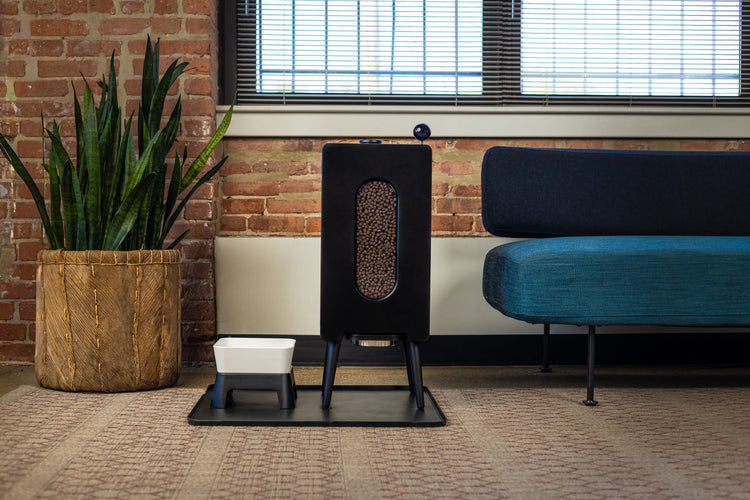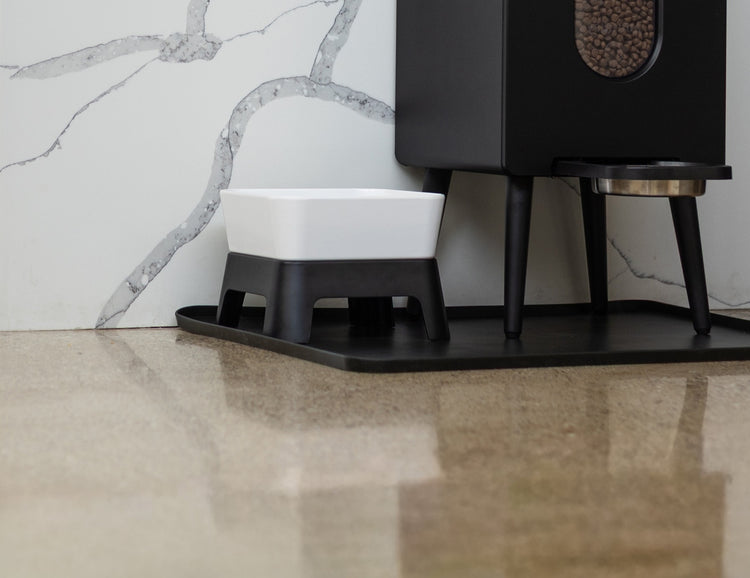How Much Should I Walk My Dog to Lose Weight? A Comprehensive Guide
- Houndsy
Table of Contents
- Introduction
- Understanding Dog Obesity
- How Much Should You Walk Your Dog?
- Techniques for Effective Dog Walking
- Pairing Exercise with Proper Nutrition
- Maintaining Motivation
- Conclusion
Introduction
Did you know that according to the Association for Pet Obesity Prevention, over 56% of dogs in the U.S. are classified as overweight or obese? This staggering statistic highlights a growing concern among pet owners and veterinarians alike. As loving guardians of our furry companions, it's essential to address this issue head-on. Walking our dogs is not just about giving them a chance to relieve themselves; it’s a crucial part of maintaining their health and well-being.
In this blog post, we will explore the most effective ways to incorporate walking into your dog's routine to help them shed those extra pounds. We'll discuss how much you should walk your dog, the right techniques, and the importance of pairing walks with proper nutrition. By the end of this post, you’ll have a comprehensive understanding of how to set your dog on a path to a healthier weight, while also discovering ways to streamline the feeding process with innovative solutions like the Houndsy Kibble Dispenser.
Understanding Dog Obesity
The Health Risks of Being Overweight
Just like humans, dogs can suffer from the negative impacts of obesity. Extra weight can lead to a variety of health issues, including diabetes, arthritis, heart disease, and even certain types of cancer. Obesity can also reduce a dog’s quality of life, leading to decreased energy levels and more health complications.
Recognizing If Your Dog is Overweight
Before we dive into the specifics of walking, it’s vital to determine if your dog needs to lose weight. Here are some signs to look out for:
- Rib Check: You should be able to feel your dog’s ribs without excessive pressure.
- Waistline: When viewed from above, your dog should have a noticeable waist.
- Belly: From the side, your dog’s belly should tuck up rather than hang down.
If your dog exhibits these signs, it may be time to consult your veterinarian for a tailored weight-loss plan.
How Much Should You Walk Your Dog?
General Guidelines for Walking
The amount and intensity of walking required for weight loss can vary based on your dog’s age, breed, and fitness level. However, a good starting point is:
- Duration: Aim for at least 30 minutes of brisk walking five days a week. This can be split into shorter walks throughout the day if needed.
- Intensity: During these walks, you should notice your dog breathing a bit heavier, and you should be able to maintain a brisk pace yourself.
Starting Slow and Building Endurance
For overweight dogs, it’s crucial to start slow. Gradually increase the duration and intensity of walks. Here’s a sample progression:
- Week 1–2: Start with 10-15 minute walks at a relaxed pace.
- Week 3–4: Increase to 20-30 minute walks, adding brisk intervals.
- Week 5 and Beyond: Aim for consistent 30-minute walks with a focus on maintaining a brisk pace.
Frequency and Consistency
Consistency is key in achieving weight loss. Aim for daily walks, but if that's not feasible, try to maintain at least five days a week. Dogs thrive on routine, and regular exercise will help them adapt better to the new regimen.
Techniques for Effective Dog Walking
Choose the Right Equipment
The right walking gear can enhance the safety and effectiveness of your walks. Consider the following:
- Harness vs. Collar: A well-fitted harness can prevent strain on your dog's neck and offer better control.
- Leash Length: Opt for a short to medium-length leash to keep your dog close, which helps maintain a steady pace.
- Footwear: If walking in extreme weather, consider dog booties to protect their paws.
Walking Techniques
- Pace: Start at a brisk pace. Ideally, aim for a 12-15 minute mile (7-9 minutes per kilometer).
- Avoid Distractions: Try to minimize stops for sniffing, which can slow down the pace. You can train your dog to focus on walking with you rather than exploring every scent.
- Incorporate Intervals: As your dog’s endurance builds, consider adding intervals of faster walking or even jogging to burn more calories.
Hydration
Always carry water for both you and your dog, especially during longer walks. A portable water bottle designed for dogs can make hydration easy and efficient.
Pairing Exercise with Proper Nutrition
Walking alone will not lead to significant weight loss; it must be paired with a proper diet. Here are some tips to ensure your dog is eating right:
Portion Control
Understanding how much to feed your dog is crucial. Use a dog feeding chart based on your dog’s weight and activity level to determine their daily caloric intake. Also, consider using a slow feeder like the Houndsy Kibble Dispenser to control portions and prevent overeating.
Healthy Treats
If you use treats for motivation during walks, opt for low-calorie options. You can even substitute treats with small pieces of your dog's kibble to maintain caloric balance.
Consult Your Vet
Before making any significant changes to your dog’s diet, it’s best to consult your veterinarian. They can provide guidance on the best diet for weight loss tailored to your dog’s specific needs.
Maintaining Motivation
Make it Fun
To keep both you and your dog motivated, consider varying your walking routes. Explore new parks, trails, or neighborhoods to keep your walks exciting.
Involve Family
Get the whole family involved in your dog’s weight loss journey. Family walks can not only help the dog but also encourage everyone to stay active together.
Reflective Questions
As you think about your dog’s weight loss journey, consider these questions:
- How often do we currently walk our dog?
- Are we incorporating enough variety into our walks?
- What adjustments can we make to our dog’s feeding routine?
Conclusion
Walking your dog is an essential component of their weight loss journey and overall well-being. By setting clear goals for walking, pairing exercise with proper nutrition, and utilizing products designed for convenience and efficiency like the Houndsy Kibble Dispenser, we can transform our dogs' lives for the better.
As we embark on this journey together, remember that gradual changes can lead to lasting results. Regular walks not only help our dogs lose weight but also strengthen the bond we share with them.
FAQ
Q: How long should I walk my dog daily for weight loss?
A: Aim for at least 30 minutes of brisk walking five days a week, gradually increasing duration and intensity based on your dog’s fitness level.
Q: What is the best equipment for walking my dog?
A: A well-fitted harness, a sturdy leash, and comfortable footwear for you are essential for safe and effective walks.
Q: Can I still give my dog treats while trying to help them lose weight?
A: Yes, but choose low-calorie options and account for treats in their total daily caloric intake.
Q: How can I ensure my dog is losing weight effectively?
A: Monitor their weight regularly, consult your vet for tailored advice, and adjust their exercise and diet plan accordingly.
Q: What if my dog has difficulty breathing during walks?
A: If your dog shows signs of respiratory distress, slow down or take breaks during walks and consult your veterinarian if symptoms persist.
By making walking a regular part of your dog’s routine and enhancing their feeding experience with tools like the Houndsy Kibble Dispenser, we can help our furry friends lead healthier, happier lives. Let's embark on this journey together! For a seamless feeding experience, explore the Houndsy Kibble Dispenser today!












